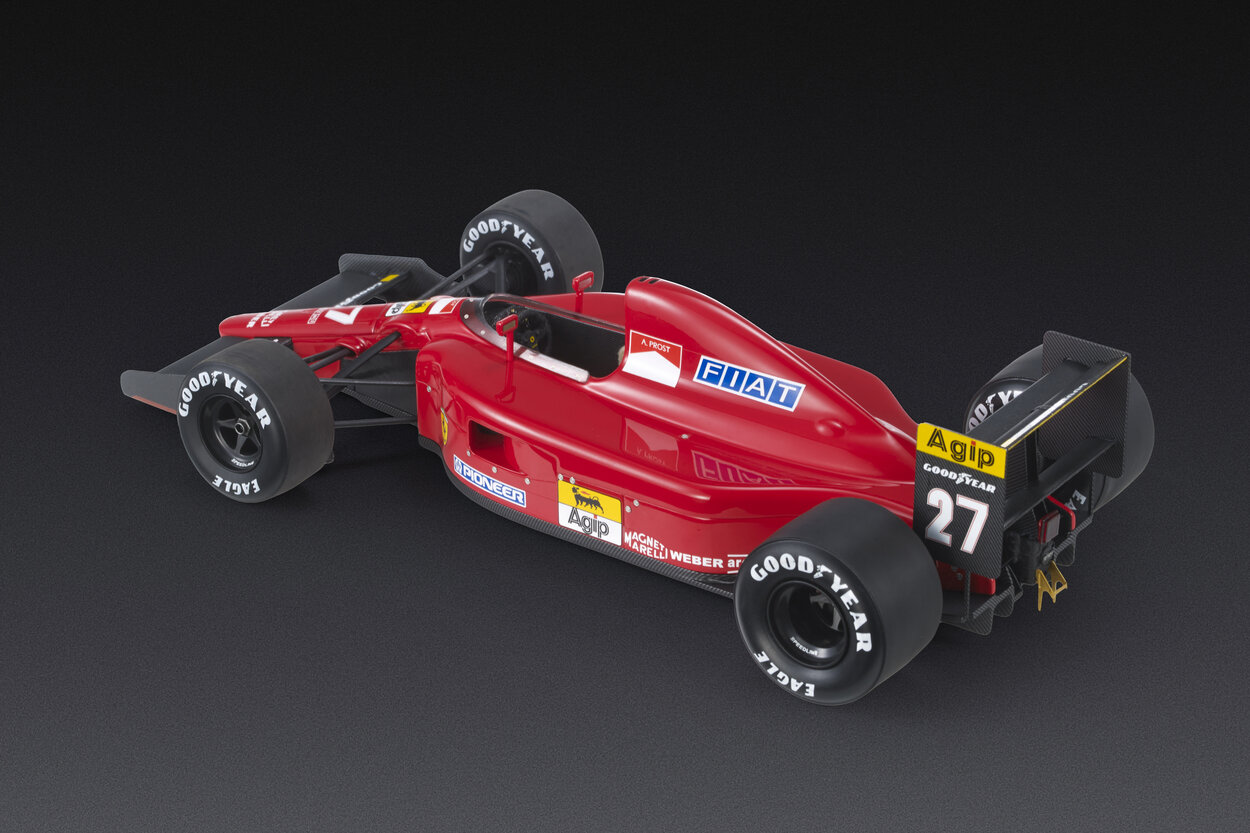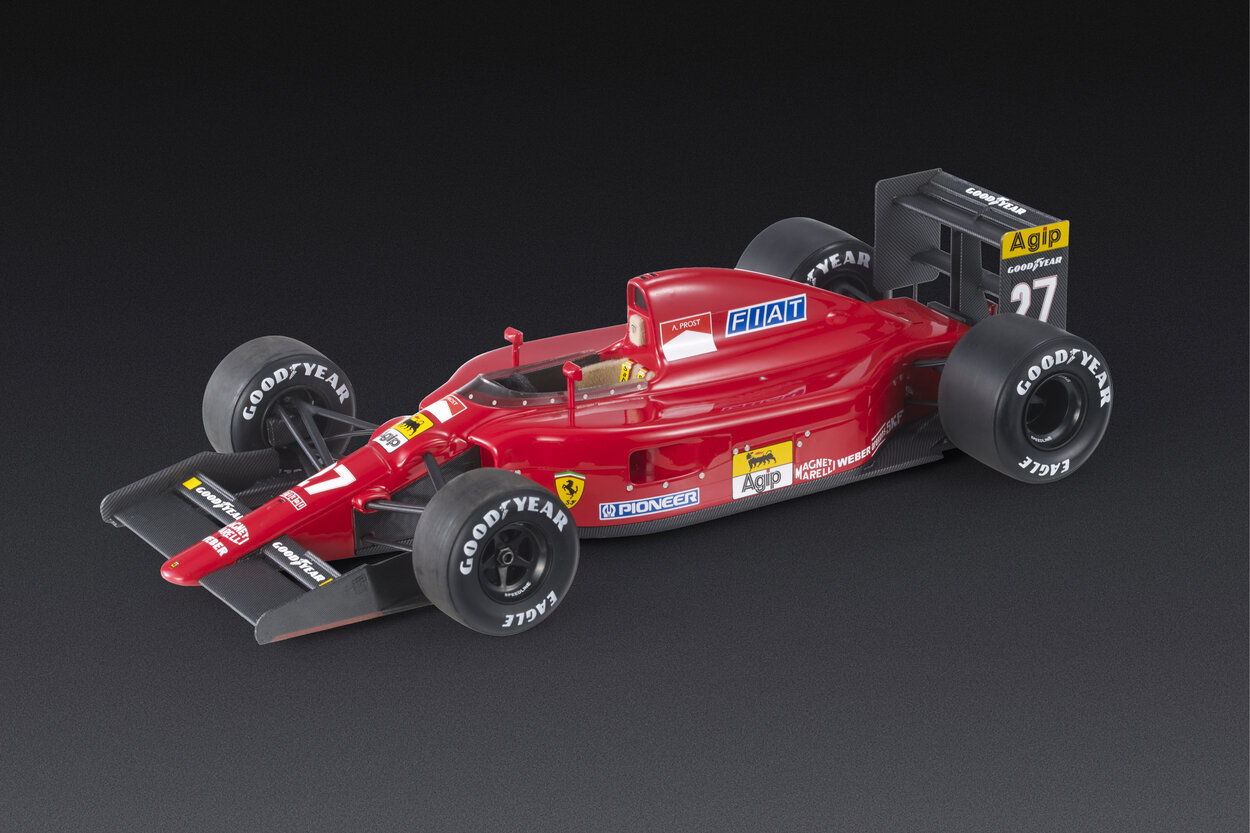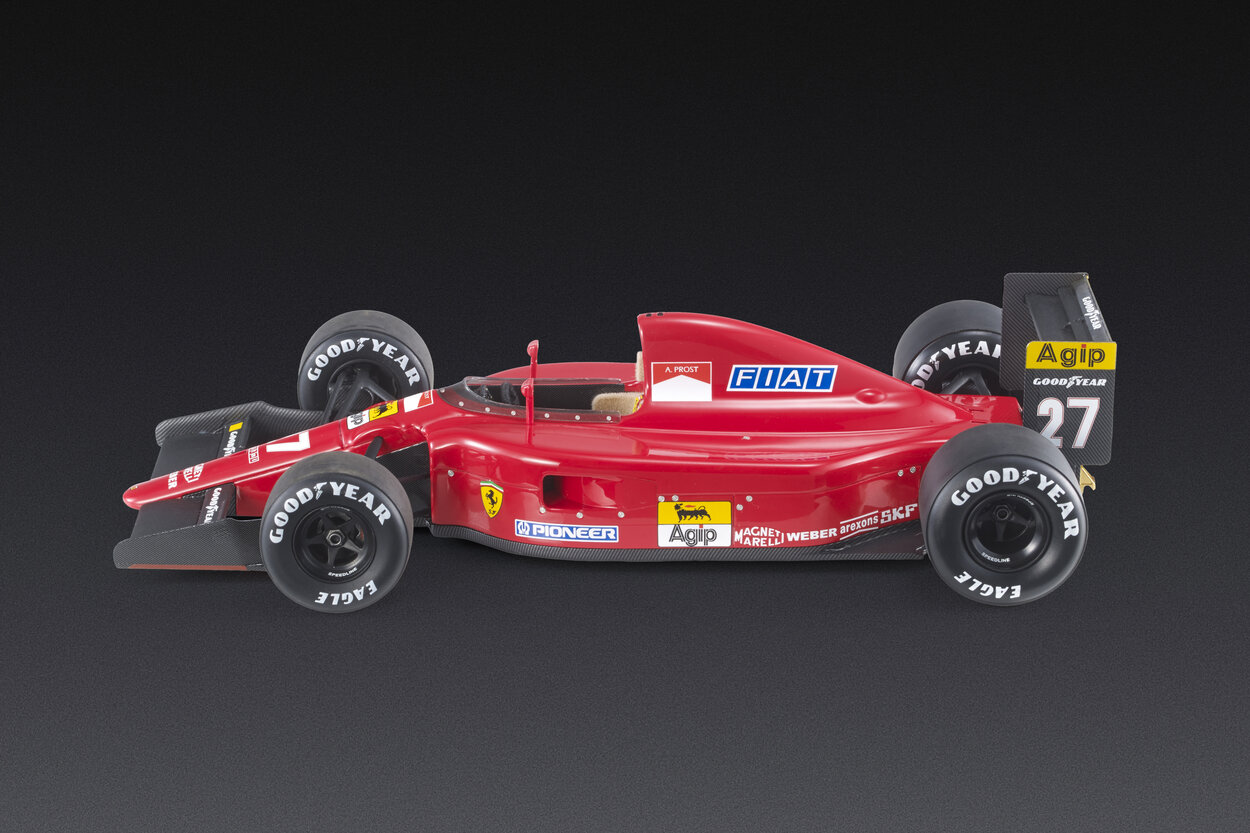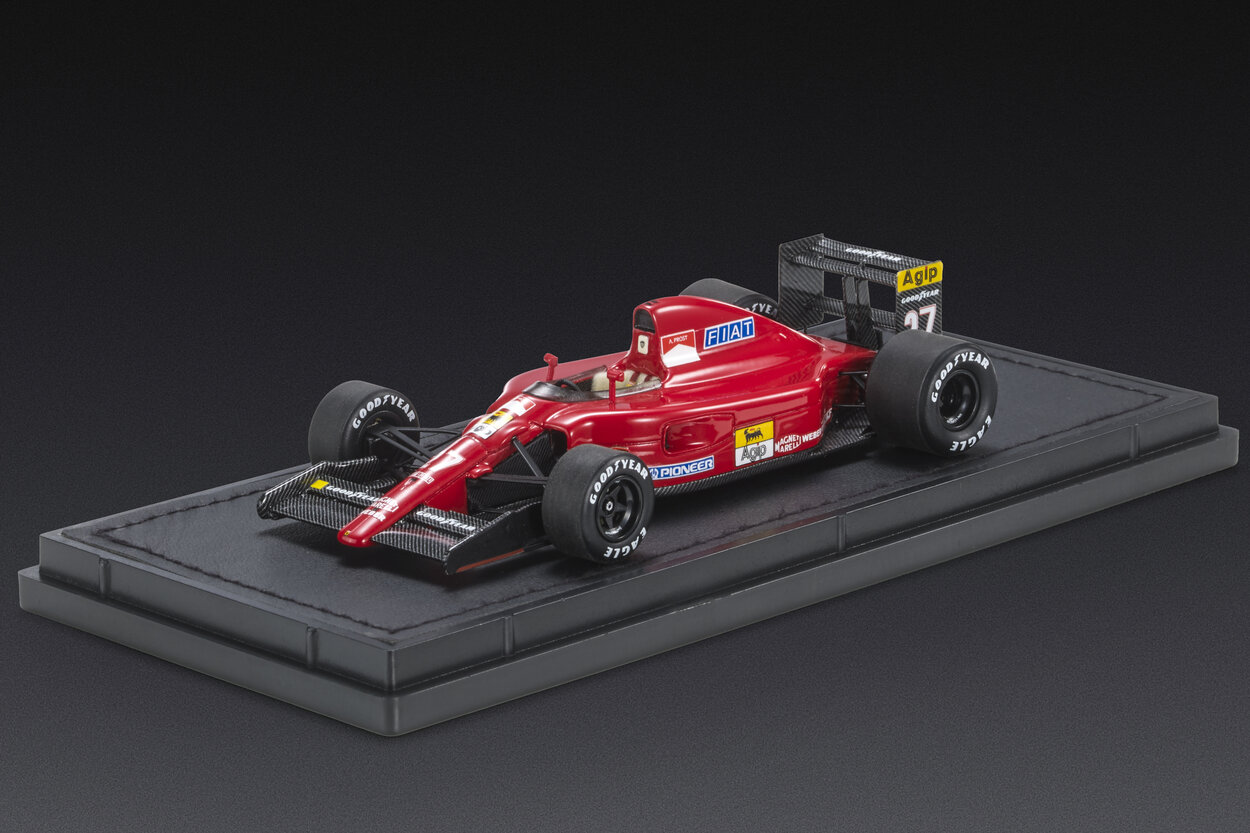Ferrari 642
It is the evolution of the previous model 641 with which Ferrari came close, with Alain Prost, to the 1990 Drivers’ World Championship title, which would have been the first since Jody Scheckter’s victory in 1979.
Like the car that preceded it, the 642 is based on the design of the 640 F1 from ’89, the first single-seater entirely designed by John Barnard after his arrival in Maranello—metaphorically speaking because the ingenious English designer never moved to Emilia but insisted that Ferrari build what was then called a ‘technological outpost’ in Guilford, not far from London. Logistically, this arrangement never really worked out and led to the premature end of the collaboration between Ferrari and the man who had orchestrated McLaren’s great successes in the 1980s.

Drivers:
Alain Prost: Despite coming close to the title the previous year, Prost’s 1991 season falls well below expectations. The blame can also be attributed to a sort of internal malaise within the team and a relationship with the sporting director Cesare Fiorio that never materialized. Behind the wheel of the 642, Prost finishes second in Phoenix in the first race of the season and sets the fastest lap in Monaco. However, at Imola, he slides on the wet asphalt during the reconnaissance lap and fails to take part in the race.
Jean Alesi: In 1991, the young French driver is the talk of the town. After his breakthrough with Tyrrell, everyone wants him. He leverages his Italian heritage and chooses Ferrari. He soon becomes a favorite among Ferrari fans. With the 642, he finishes third in the Monaco Grand Prix. His first championship point came with a sixth-place finish in Brazil, only his second race. But even in the first race, in Phoenix, he had already set the fastest lap during the race.
Our model cars:

By 1991, Barnard had already left Ferrari, and the 642 was developed by Steve Nichols and Jean-Claude Migeot. The major differences from the preceding model, which retains the beauty and grand proportions of the overall design, are due to changes in the regulations: the rear wings are reduced in size, and the fuel tanks are moved behind the drivers. The 12-cylinder engine sees further power adjustments.
The Ferrari 642 had a very short life, participating in only six world championship races. Despite securing a second place in its debut race in Phoenix and a third place in Monaco, it was never truly competitive and suffered six retirements. Despite its unremarkable career, it managed to achieve the fastest lap in both the Phoenix and Monaco races.


